Abstract
OBJECTIVE: This study evaluates the effectiveness of the stationarity assumption in predicting the mortality of intensive care unit (ICU) patients at the ICU discharge. DESIGN: This is a comparative study. A stationary temporal Bayesian network learned from data was compared to a set of (33) nonstationary temporal Bayesian networks learned from data. A process observed as a sequence of events is stationary if its stochastic properties stay the same when the sequence is shifted in a positive or negative direction by a constant time parameter. The temporal Bayesian networks forecast mortalities of patients, where each patient has one record per day. The predictive performance of the stationary model is compared with nonstationary models using the area under the receiver operating characteristics (ROC) curves. RESULTS: The stationary model usually performed best. However, one nonstationary model using large data sets performed significantly better than the stationary model. CONCLUSION: Results suggest that using a combination of stationary and nonstationary models may predict better than using either alone.
Full text
PDF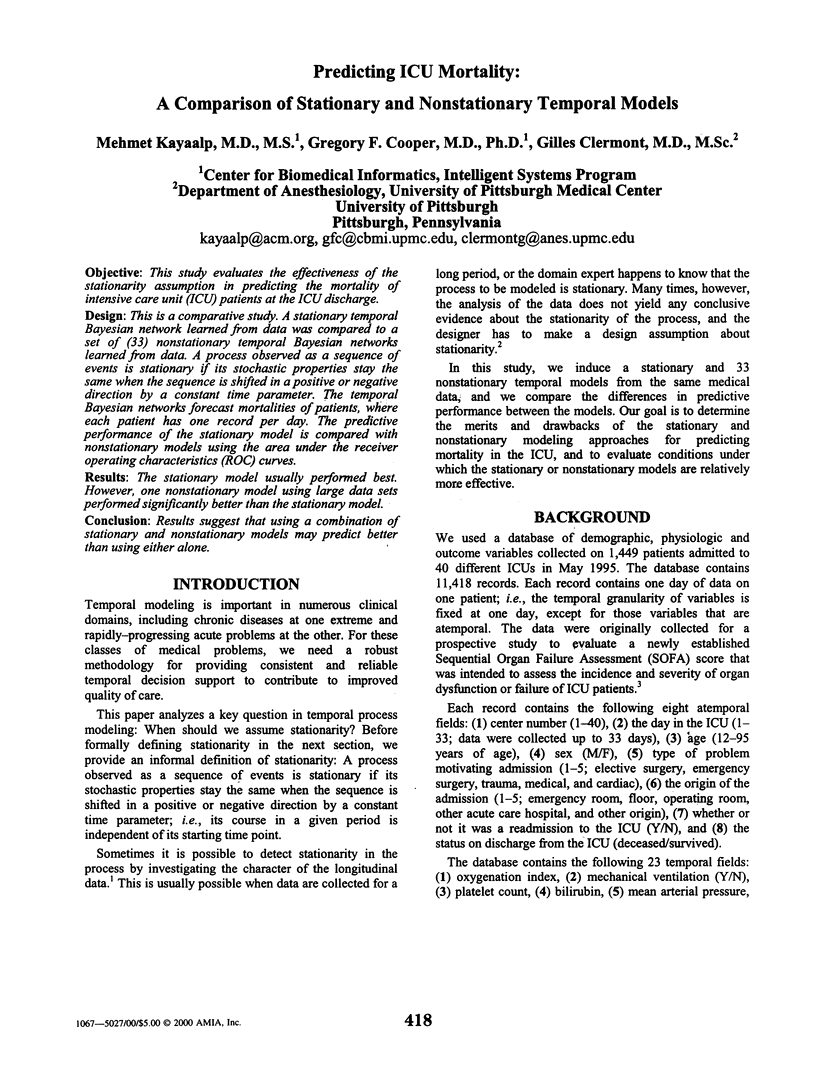
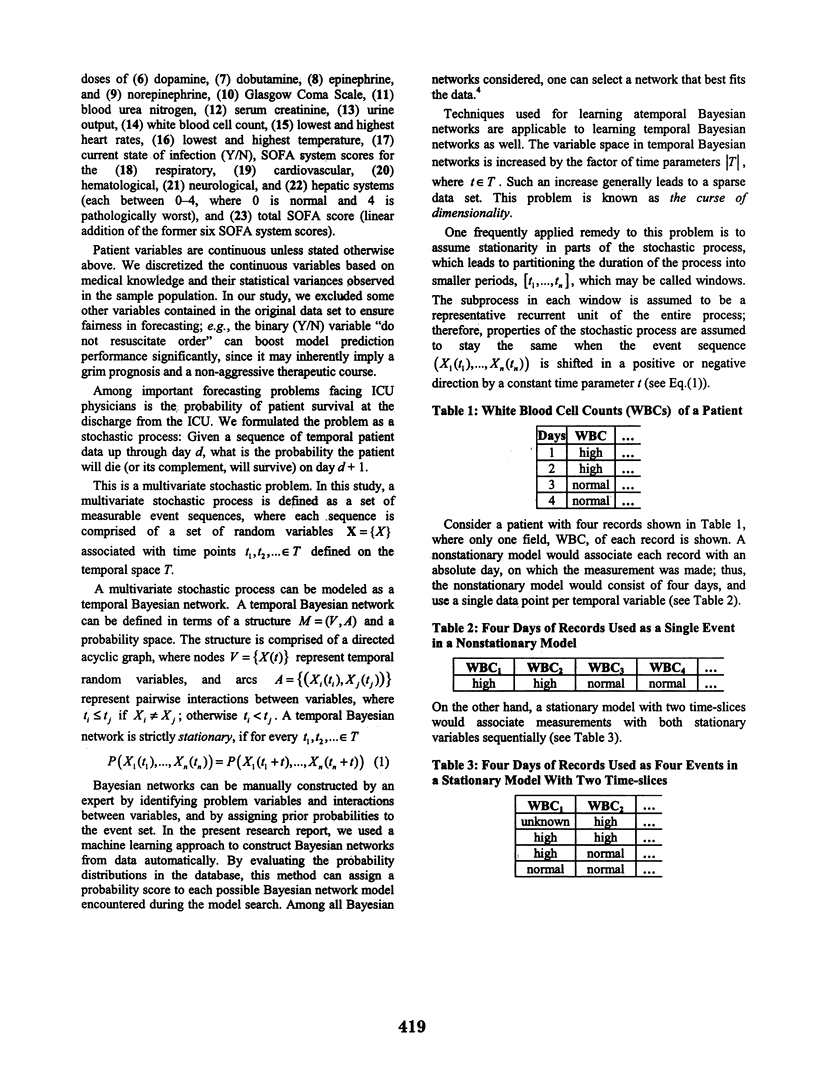
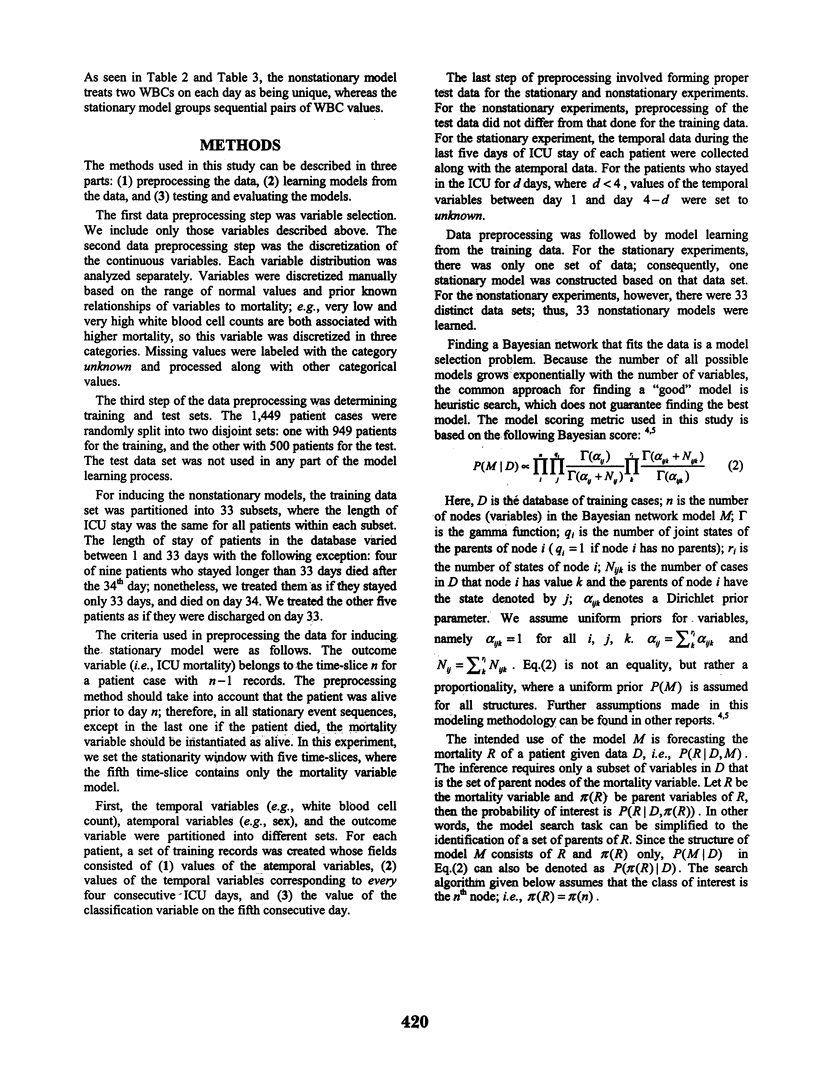
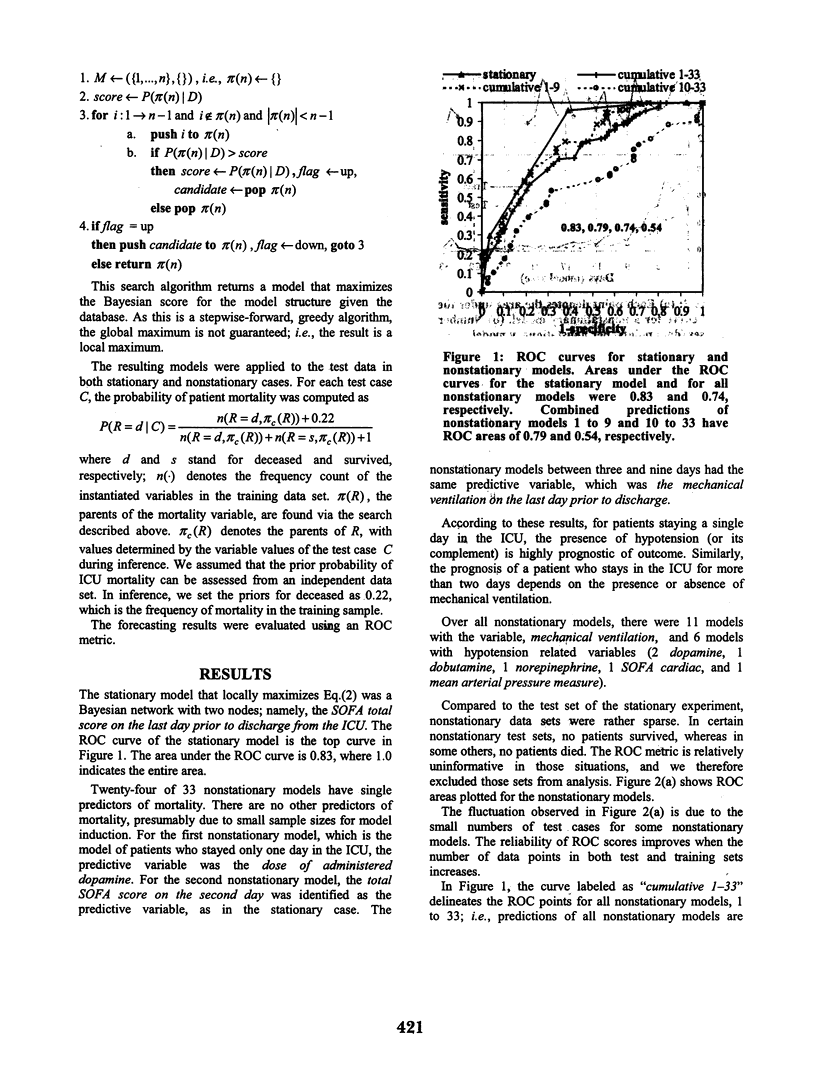
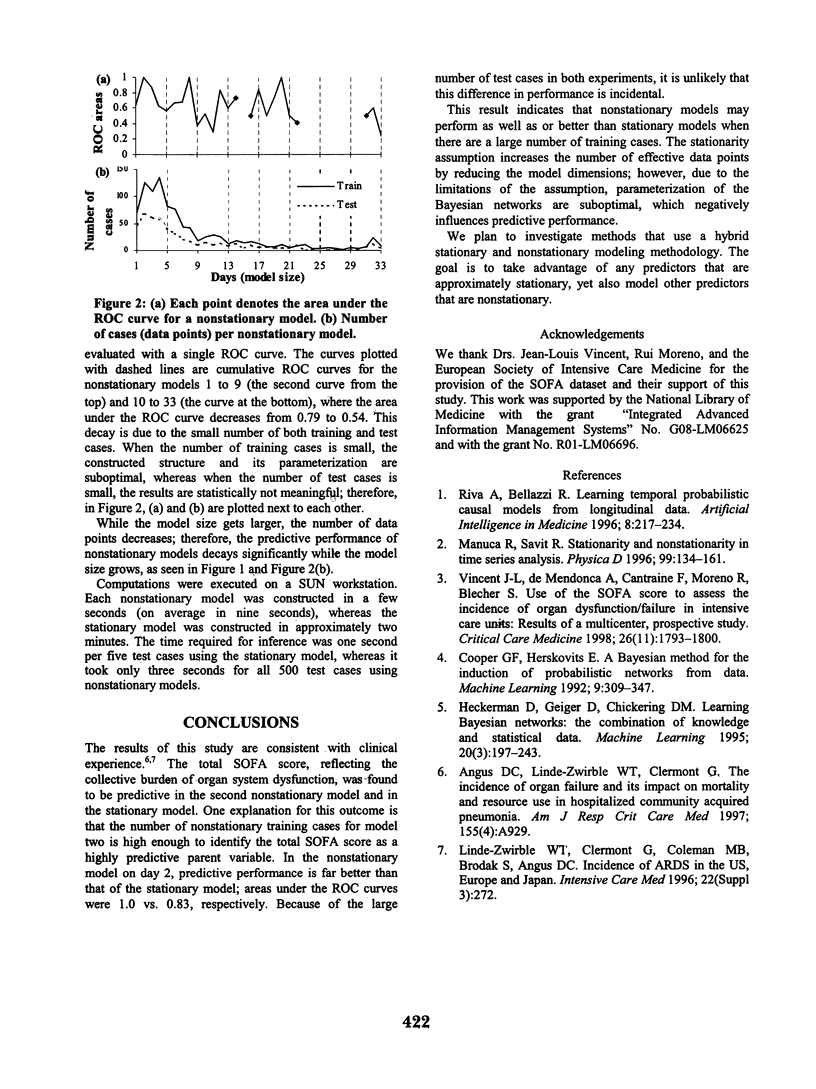
Selected References
These references are in PubMed. This may not be the complete list of references from this article.
- Riva A., Bellazzi R. Learning temporal probabilistic causal models from longitudinal data. Artif Intell Med. 1996 Jul;8(3):217–234. doi: 10.1016/0933-3657(95)00034-8. [DOI] [PubMed] [Google Scholar]
- Tebbs S. E., Ghose A., Elliott T. S. Microbial contamination of intravenous and arterial catheters. Intensive Care Med. 1996 Mar;22(3):272–273. doi: 10.1007/BF01712253. [DOI] [PubMed] [Google Scholar]
- Vincent J. L., de Mendonça A., Cantraine F., Moreno R., Takala J., Suter P. M., Sprung C. L., Colardyn F., Blecher S. Use of the SOFA score to assess the incidence of organ dysfunction/failure in intensive care units: results of a multicenter, prospective study. Working group on "sepsis-related problems" of the European Society of Intensive Care Medicine. Crit Care Med. 1998 Nov;26(11):1793–1800. doi: 10.1097/00003246-199811000-00016. [DOI] [PubMed] [Google Scholar]


